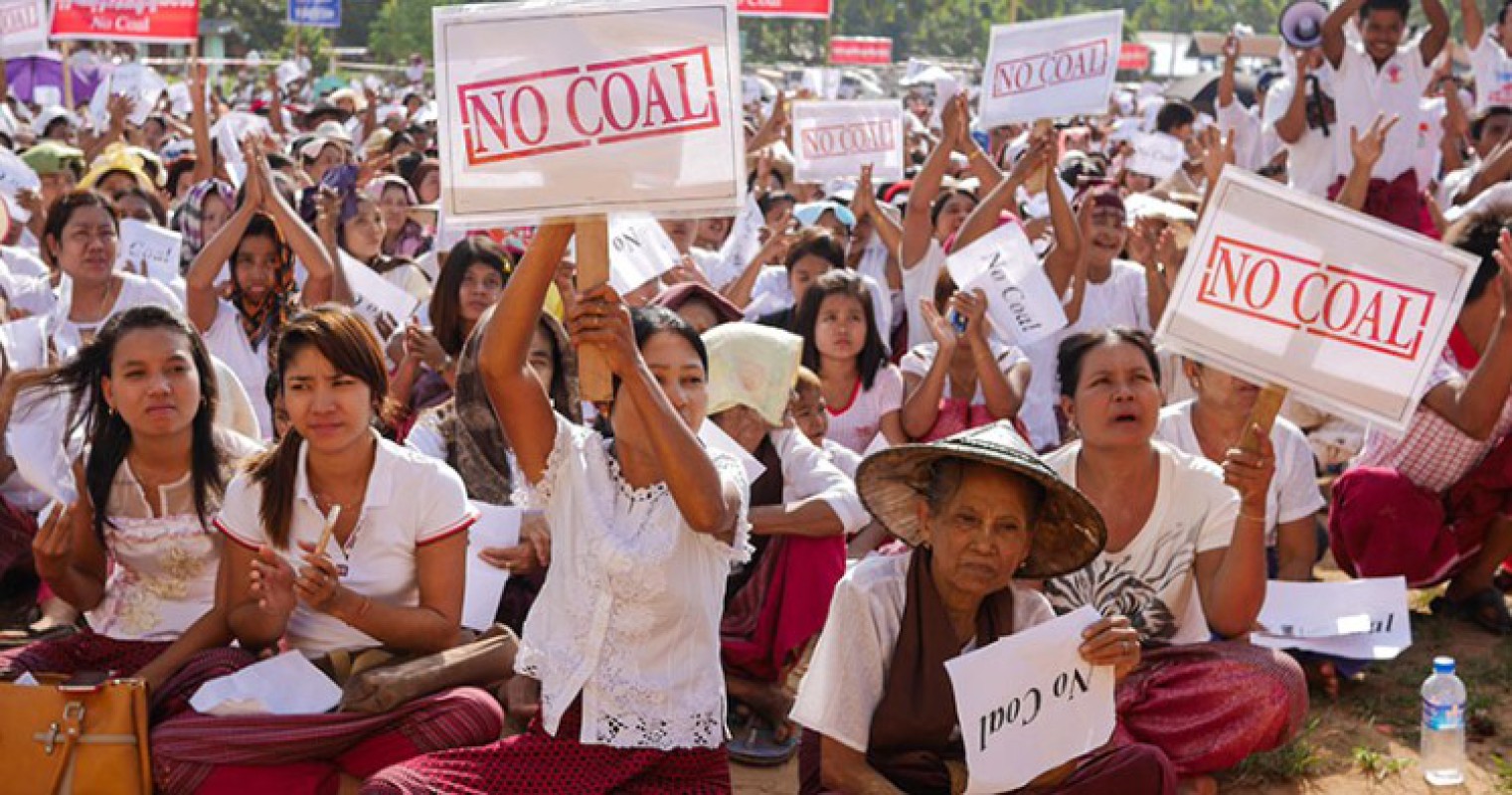No coal, No dam, No electricity

1368

Phyo Lin Aung (NP News) - Jan 22
Myanmar is currently experiencing frequent power outages, leading to widespread electricity shortages. The situation has worsened due to the halting of various national power plant projects, which were delayed or stopped due to opposition and other factors in decades ago. As a result, the country is facing severe electricity shortages, contributing to the ongoing power crisis and leaving the people of Myanmar in dark in their daily life with limited access to reliable electricity.
The Ministry of Electric Power reported the following installed generating capacities: 30 hydroelectric plants (3,232 MW), 26 natural gas plants (3,268 MW), 2 coal plants (138 MW), and 8 solar plants (240 MW), totaling 6,878 MW. However, due to various issues, electricity production is significantly reduced. Damage to major power lines has cut 1,009 MW from the total output, while decreasing natural gas supplies have led to a 291 MW reduction from thermal plants. Flooding and damage from the Rakhine cyclone have caused hydroelectric plant shutdowns, reducing capacity by 140 MW. In total, these factors have resulted in a 1,440 MW reduction, leading to a daily average generation of about 2,200 MW, which is only 50 percent of the total capacity.
Coal opposition is a key barrier to energy
Myanmar has significant coal resources, which could provide a reliable solution to the country's ongoing power shortages. However, some environmentalists and activists, who may not fully understand the severity of the power crisis, are opposing coal power plant projects. They often encourage local communities to resist such developments, citing environmental concerns. This opposition hinders the potential to use coal as a key energy source, despite its ability to help addressing Myanmar's electricity shortages.
The Tigyit power plant is Myanmar's only operational coal-fired power station. It is located in the village of Tigyit in Shan State, about 20 kilometers from Inle Lake. Built by the China National Heavy Machinery Corporation (CHMC) and Eden Group of Myanmar, the plant began construction in 2002 and was completed in 2005. It has two 60 MW generating units, producing 600 GWh of electricity annually using 640,000 tons of coal from the nearby Tigyit mine. The electricity is distributed locally and to nearby industrial plants, including the Nagar cement plant.
Several coal-fired power stations are proposed in Myanmar to address the country's growing energy needs. These include the Kalewa power station, a 600 MW facility; the Mai Khot power station, a 369 MW plant intended for export to northern Thailand; the Htantabin power station, a 270 MW project for Yangon’s industrial zones; the Dawei power station, a large-scale 4,000-6,000 MW plant for a major industrial estate; the Yangon Region power station, a 1,080 MW station with unclear usage plans; and the Kawthoung power station, a smaller 6 MW project. These proposed stations reflect Myanmar's increasing reliance on coal to meet its energy demands, although they face significant opposition and various challenges.
Even China, the world's second most populous country, relies heavily on coal for its energy needs, with coal accounting for over 60 percent of its total energy consumption. Despite its significant push towards renewable energy sources, coal remains a dominant factor in China's energy mix due to its abundance, affordability, and established infrastructure for power generation.
Myanmar could benefit from learning from China's energy strategy, particularly its reliance on coal to meet growing energy demands. Myanmar should consider prioritizing energy security and development by addressing the tangible factors such as energy shortages rather than being overly influenced by intangible and unforeseen factors, like environmental concerns or opposition, which can hinder the progress of coal power plant projects. By thoroughly managing these concerns and focusing on long-term energy solutions, Myanmar could alleviate its power shortages and support its economic growth.
No dam, no solution to power shortage
Myanmar has significant hydroelectric power potential, with nearly 200 large dams and an estimated total potential of 39,000 megawatts, of which about 37,000 megawatts is economically exploitable. From 1990 to 2002, Myanmar tripled its installed hydroelectric capacity, increasing from 253 megawatts to 745 megawatts. By 2010, the total installed capacity reached at least 2,449 megawatts, representing about 6 percent of its total hydroelectric potential. Several large dams are planned to further increase the country’s hydroelectric power capacity in the future.
Hydropower plants are crucial to Myanmar’s energy supply, with the Yeywa Dam being the largest, producing 790 megawatts on the Myitnge River. Other significant dams include the Shwegyin Dam on the Shwegyin River, the Lower Paunglaung Dam and Upper Paunglaung Dam on the Paunglaung River, and the Shweli I Dam on the Shweli River. These dams play a key role in the country’s power generation.
Myanmar's large hydropower dam projects, such as the Myitsone dam invested by China, have faced significant opposition from local communities. Despite the fact that the local population may not fully recognize the potential benefits, including improved electricity supply and economic development, the opposition has been strong. Many locals have raised concerns about environmental impacts, displacement, and the overall consequences of such large-scale projects. As a result of this opposition, the Myitsone dam project, which was a major investment, has been halted for an extended period, delaying its potential contribution to Myanmar's energy sector.
In conclusion, relying solely on either coal or hydropower alone will not be enough to meet Myanmar's growing demand for electricity. However, both coal and dam projects are crucial for ensuring a sufficient and reliable power supply. If opposition to these energy sources continues without considering the urgent need for electricity, Myanmar will likely face prolonged power shortages and fail to meet the needs of its citizens. A balanced and practical approach to energy development is essential for achieving power sufficiency in the country.